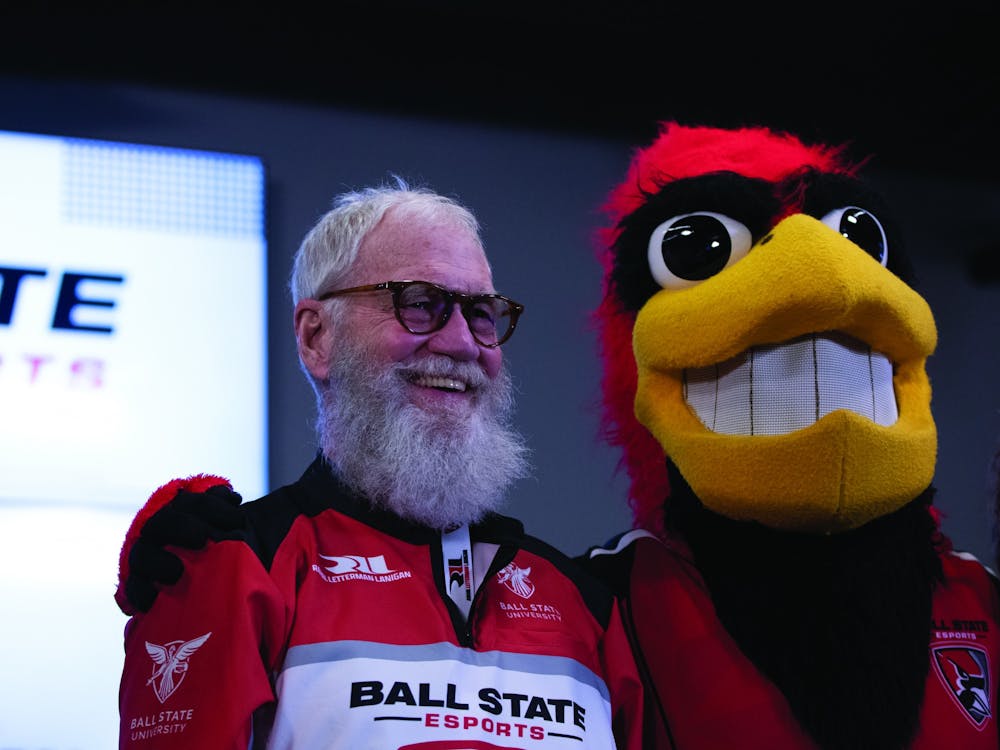WEST LAFAYETTE, Ind. - Spend a few minutes with Riley Avron and the word "awesome" will punctuate the conversation.
And why shouldn't it?
The Purdue University student, just days into his sophomore year, has quite an awesome story to tell.
There's the game he co-created for the iPhone while in high school, simmering ideas for a potentially groundbreaking startup company and - oh yeah - this past summer he developed a program for NASA engineers to practice driving the Mars Curiosity Rover.
Avron recently wrapped up a third internship at NASA's Jet Propulsion Laboratory in Pasadena, Calif., where he programmed an iPhone app that, with a few finger taps, sends commands to a test model of the Curiosity rover named Scarecrow.
"Scarecrow was, at best, inconvenient to control and drive. You had to carry a full-size laptop on your arm ... and type out lengthy commands with one hand. No fun," Avron told the Journal & Courier. "So what I developed was an iPhone app to go and do the driving easily."
Scarecrow doesn't contain the scientific tools that are onboard Curiosity but weighs about the same on Earth as Curiosity weighs on Mars with less gravity. Engineers drive Scarecrow in the Mars Yard, a re-creation of the Martian surface at JPL, to figure out how the rover will behave on another planet.
"We drive it up rocks, through sands," Avron said. "We do a lot of mean stuff to this rover to see what it can do. Just because we want to know. We'd much rather get stuck here than on the red planet."
Jaret Matthews, a 2001 Purdue alumnus and robotics mechanical engineer at JPL, helped develop Curiosity. He oversaw Avron during this summer's internship.
Matthews said creating a real-time, almost joystick-like, method to drive a test vehicle had not been a focus. Besides, it takes 20 minutes for commands to reach Mars. If you were steering a Martian rover, instead of typing commands for a short distance, there could be trouble.
"If we saw a cliff coming up it would already be too late," he said.
But the app - which Avron developed in about 10 weeks - became a breakthrough for practicing drivers to understand how commands would translate to Curiosity. The app lets users choose the distance and trajectory they want the rover to go.
"The proof was in the pudding," Matthews said. "It was important because it allowed the rover drivers to focus on Scarecrow, what it was doing, and not having their head buried in the laptop.
"All of the rover drivers were given homework as such, where they had to take Riley's iPhone and app and take X number of hours with Scarecrow to see how it would perform."
Some of the practice was put to use in the rover's first test drive. Commands were loaded for the six-wheeled, car-size rover to roll forward one car length, rotate 120 degrees to the right and then back up nearly the same distance.
Since returning to Purdue from his Los Angeles home, Avron has been busy practicing trumpet in Purdue's "All-American" Marching Band and preparing for classes. He is an electrical and computer engineering major. He's still in awe of the rover landing on Mars.
"Being part of it was incredible. But even if I never set foot on JPL's campus - what we did with Curiosity is an unparalleled achievement," he said. "We put this ton-and-a-half rover on another planet with a rocket jet pack. To be able to say, in some small way here on Earth, I contributed to that - wow. It's awesome."
Avron credits FIRST Robotics with jump-starting his fascination with technology. For Inspiration and Recognition of Science and Technology is a national organization dedicated to fostering an appreciation of science and engineering. Avron has already worked as a mentor for the Purdue program.
"All through junior high and high school, I was into computer programming and robotics. It was all awesome," he said.
"Science in general - super awesome. I am literally the kind of guy who will get on Wikipedia and read it down. People joke, 'go read the encyclopedia.' I do that on Wikipedia."
As a high school junior, Avron applied for an internship at JPL - and worked on a radar system that was used during the Curiosity's Mars landing earlier this month. He returned a year later to lend a hand on a few different programs.
Matthews wanted Avron to return this summer. For one reason, he wanted another Boilermaker around.
"Riley is unique among JPL interns," he said. "Prior to coming here, he had a startup company and an app for sale on the iTunes store. He just has an amazing attitude and great work ethic."
Avron and Stanford University friend Harry Levine created the Potential puzzle game for the iPhone and iPad and have other plans.
"We've got some startups in the works," the 19-year-old said. "I figure there is not going to be another time in my life when I can just say, 'Well, that company didn't work. Let's go start a new one.'"
Avron's future is wide open. He's not sure where it will lead.
"I don't know. I know I like technology ... Airplanes - awesome. Space - even better."




